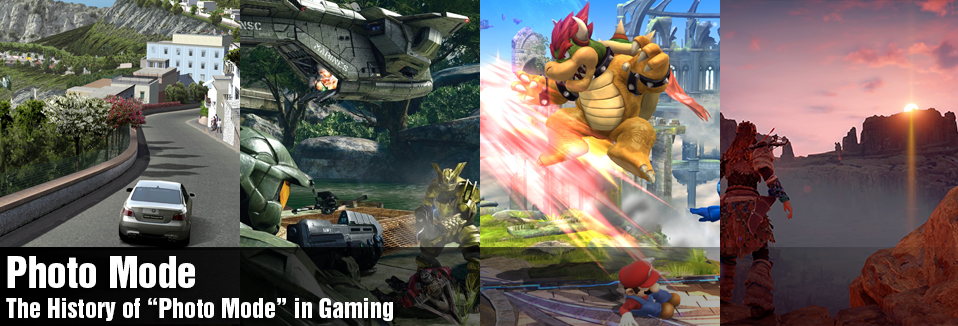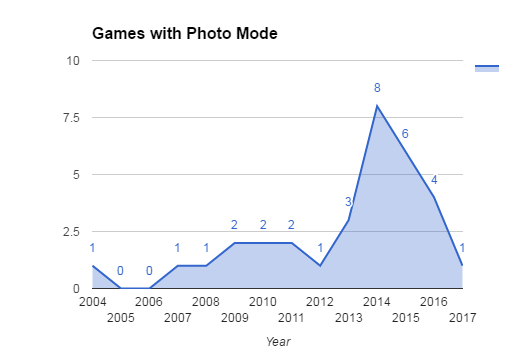|
|
Personal Projects
|
|
|
While playing Horizon Zero Dawn, in one of the first moments of gameplay I paused the screen to check out my game options and discovered that it had a photo mode. I didn’t know that Horizon had shipped with such a feature, and decided to check it out. I was pretty blown away… I immediately got very into pausing my game at any moment, and playing with the camera settings to get the most cinematic screenshot possible. If you have me on instagram, you’ll notice that I immediately took advantage of the new multiple photo upload feature and inundated my feed with images from Horizon. This isn’t the first time I’ve seen a photo mode used in a video game, and so this got me wondering a bit more about the history of this feature. Today I’ll be exploring the Photo Mode in video games, it’s history, and how it’s evolved.
My first experience with the Photo Mode was in 2007 while playing Halo 3. I remember being able to access a recent recording of either my campaign or multiplayer game, and within the “Theater mode” be able to rotate the camera and look around. This was a really neat feature at the time, and allowed players to get a closer look at all of the game models and effects… not to mention great bragging material for when you could take a pic of that perfect headshot. Yet this wasn’t the first game to introduce the Photo Mode. In 2004, from what I can tell, Gran Turismo 4 was the first game to release with a full fledged Photo Mode. After that point it took quite some time for video games to really adopt the feature and have it be more of a standard features in certain video games. Oddly enough a decade after Gran Turismo 4’s release, the industry experienced a boom of games featuring a Photo Mode. In 2014 there were 8 game titles featuring a photo mode, the highest in any year to date.
Upon digging deeper I was pretty shocked to find that many of the Photo Mode features in Gran Turismo 4, are still prevalent in today’s games. I was expecting to see more of an evolution of this mode, but honestly it seems as though Gran Turismo set the benchmark for this feature within the industry. At most I can see that the mode has evolved out of a “replay” setting and instead now games can pause the action live and allow for the player’s to enter this mode immediately.
The biggest difference I can see with Horizon Zero Dawn and these features is both the ability to play with the Depth of Field, as well as change the time of day…. Which I’m not sure other games provide that option. All that to say it’s pretty impressive to see that through all of the changes within the industry, a simple mode such as this hasn’t evolved all that much. While I enjoy playing around with this game mode, I wonder if there’s any real value with the commercial applications of it. From an artistic point of view, there’s certainly value with a feature like this. Perhaps I’ve been working on Freemium games for too long, and so my instinct is to question how a feature like this might be used to increase player acquisition. Honestly at this point it may be more prevalent of a feature, than it ever was in 2004. With the rise of social media, and how easy it is for users to create and share media… a feature like this could be leveraged heavily as a “free” marketing tool. I believe this is referred to as Earned Media, or publicity gained through efforts other than paid advertisements. If we could find ways of making it more accessible for users to share this content, potentially by linking directly to their social media accounts, and then link this user generated content to your game through the appropriate hashtags… it could make this a very powerful tool for game awareness. In any case, I this looks to be a short blog post today! I hope you enjoyed this brief snapshot into the history of the photo mode in games! Pun intended!
2 Comments
2/19/2020 01:35:54 am
This enables you to keep working as per your schedule without having to worry about how to complete your essay on time.
Reply
Leave a Reply. |
AuthorI make games, I play games... and sometimes I have some thoughts about that. Archives
March 2024
|
Proudly powered by Weebly
















 RSS Feed
RSS Feed